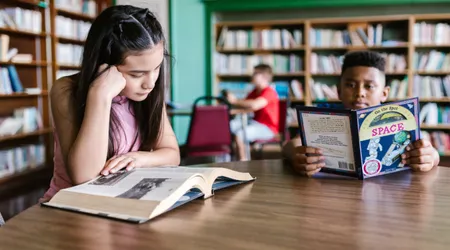UK Schools Report Benefits After Mobile Phone Bans

Mobile phone bans have sparked a quiet revolution in UK classrooms, reshaping how students learn and interact.
Schools across England, from bustling London boroughs to rural academies, are reporting tangible improvements in focus, engagement, and mental well-being since implementing strict policies to curb smartphone use.
This shift, driven by mounting evidence of digital distractions and their impact on young minds, raises a critical question: are we finally reclaiming the classroom from the grip of technology?
With headteachers empowered to enforce mobile phone bans, the results are compelling, though not without debate.
This article explores the benefits, challenges, and broader implications of these policies, diving into real-world outcomes and what they mean for the future of education.
The push for mobile phone bans stems from a growing recognition that smartphones, while powerful tools, often hinder learning.
Constant notifications, social media scrolling, and the lure of instant gratification pull students away from lessons.
Beyond academics, concerns about mental health linked to excessive screen time have fueled the movement.
A 2025 survey by the Children’s Commissioner revealed that 90% of English schools now restrict phone use during the school day, a significant jump from previous years.
This isn’t just a trend; it’s a response to a crisis of attention and well-being.
Schools like Birchwood Community High in Warrington, which adopted lockable pouches for phones, report not just academic gains but a cultural shift toward real human connection.
Yet, the journey to phone-free schools isn’t uniform. Some argue for teaching digital literacy over outright bans, while others see restrictions as a necessary reset.
As we unpack the evidence, from improved test scores to reduced bullying, it’s clear that mobile phone bans are more than a policy they’re a statement about what education should be.
Let’s explore how these changes are unfolding, why they matter, and what challenges lie ahead.
The Evidence: How Mobile Phone Bans Boost Learning
Classrooms without smartphones are proving to be fertile ground for academic growth.
A 2018 study by economist Richard Murphy found that mobile phone bans in British schools led to a notable increase in student performance, particularly for low-achieving students.
This isn’t surprising when you consider the cognitive cost of distractions.
Imagine a student trying to solve a math problem while their phone buzzes with TikTok notifications it’s like trying to read a book during a rock concert.
Schools enforcing mobile phone bans report fewer disruptions, allowing teachers to maintain lesson flow and students to stay immersed.
Beyond test scores, engagement is soaring. At John Wallis Academy, a phone ban slashed low-level disruptions by 42% and serious behavioral incidents by 40%.
Teachers describe students as more present, asking questions and collaborating rather than sneaking glances at screens.
This shift fosters deeper learning, where ideas stick rather than evaporate amid digital noise. It’s a reminder that focus is a muscle, and mobile phone bans are helping students flex it.
++ How to Study in the UK for Free (or Cheaply!)
The academic ripple effect is undeniable, but it’s not just about grades.
Phone-free environments encourage critical thinking and creativity, skills dulled by constant scrolling.
For example, at a secondary school in Bristol, teachers noted students writing longer, more thoughtful essays after a ban took effect.
By removing the temptation to check phones, schools are giving students the space to wrestle with complex ideas, proving that sometimes, less tech means more progress.

Social and Emotional Gains: Rebuilding Connections
Smartphones often act as a barrier to authentic relationships, and mobile phone bans are tearing that wall down.
Schools report a resurgence of face-to-face interactions, with students chatting during breaks instead of staring at screens.
At Birchwood Community High, the lockable pouch system led to a 25% drop in truancy, as students felt more connected to their peers and school community.
Also read: Top 10 Most In-Demand Degrees in the UK
It’s as if the playground has been reborn, with laughter and conversation replacing the silence of scrolling.
Bullying, too, is declining. A 2025 study of 477 middle schools found that strict mobile phone bans correlated with lower rates of bullying, especially among girls.
Without phones to amplify online taunts or record humiliating moments, students feel safer.
Consider Sophie, a Year 9 student at a Manchester school: after a ban, she stopped dreading lunch breaks, where cyberbullying once thrived.
These stories show that mobile phone bans aren’t just about discipline they’re about creating kinder, more inclusive spaces.
Mental health benefits are equally striking. Excessive smartphone use has been linked to anxiety and depression, and schools are seeing fewer students seeking psychiatric support post-ban.
By limiting exposure to social media’s pressures think curated Instagram lives or Snapchat streaks students are rediscovering self-worth beyond likes and followers.
This emotional reset is helping them navigate adolescence with greater resilience, proving that sometimes, disconnection is the best connection.
Read more: The Cost of Studying in the UK: Is It Worth It?
The Counterargument: Are Bans Too Heavy-Handed?
Not everyone cheers for mobile phone bans. Critics, like Dr. Robert Harrison of ACS International Schools, argue that schools should teach students to navigate digital spaces rather than ban devices outright.
Smartphones, they say, are integral to modern life, and bans risk leaving students unprepared for a tech-driven world.
It’s a valid point: if a student can’t learn to manage notifications in school, how will they handle a workplace buzzing with Slack messages?
Some parents also resist, citing safety concerns. For instance, Maria, a mother from Leeds, worries that without her daughter’s phone, she can’t check in during emergencies.
This fear isn’t baseless phones can be lifelines, as seen in rare cases where students used them to call for help.
Yet, schools counter that robust safety protocols, like office phones and staff training, address these concerns without compromising focus.
The debate hinges on balance. While bans yield clear benefits, they must be paired with digital literacy programs to prepare students for a world where tech is unavoidable.
Schools like those in Finland, which allow limited phone use with permission, show that flexibility can work.
The challenge is ensuring mobile phone bans don’t become a blunt tool, stifling innovation while solving distraction.
Implementation Challenges: Making Bans Work
Enforcing mobile phone bans isn’t always smooth. Some students resist, hiding phones or sneaking them during breaks, testing teachers’ resolve.
At a London academy, initial bans led to a spike in behavioral issues as students adjusted.
Headteachers need clear policies like lockable pouches or designated phone storage to minimize loopholes and ensure consistency across classrooms.
Teacher training is another hurdle. Not all staff feel equipped to police phone use, especially in schools with stretched resources.
A 2025 Teacher Tapp survey found only 48% of secondary schools ban phones all day, with just 9% collecting devices at the start.
This patchwork approach undermines effectiveness, as inconsistent rules breed confusion. Schools need government support perhaps funding for pouches or training to make bans stick.
Parental buy-in is critical, too. Some parents undermine bans by encouraging kids to keep phones “just in case.”
Schools like those in Stamford, where parents signed a smartphone-free pledge, show that community alignment works.
By involving families, schools can turn mobile phone bans into a shared mission, not a battleground.
Data Table: Impact of Mobile Phone Bans in UK Schools
| Metric | Pre-Ban | Post-Ban | Source |
|---|---|---|---|
| Low-level disruptions | 100% | 58% | John Wallis Academy |
| Serious behavioral incidents | 100% | 60% | John Wallis Academy |
| Truancy rates | 100% | 75% | John Wallis Academy |
| Schools with phone restrictions | 60% | 90% | Children’s Commissioner |
The Bigger Picture: Technology and the Future of Education
Mobile phone bans are just one piece of a larger puzzle: how do we balance technology with human connection in education?
While bans address immediate distractions, they don’t solve the broader issue of tech’s grip on young minds.
Schools must teach students to use technology purposefully, not reflexively.
For example, a Birmingham school integrates coding lessons but bans phones, showing kids that tech serves learning, not leisure.
The role of AI and digital tools adds complexity. Education Secretary Bridget Phillipson is exploring AI to streamline tasks like marking, freeing teachers for face-to-face instruction.
This suggests a future where tech enhances, not dominates, education. Bans could pave the way for smarter tech integration, ensuring devices empower rather than enslave.
Finally, mobile phone bans challenge us to rethink what education is for. Is it about test scores, or fostering curious, connected humans?
By prioritizing focus and relationships, bans remind us that learning thrives in spaces where minds are free to wander, not tethered to screens.
Isn’t that the kind of education we want for our kids?

Conclusion: A Step Toward Smarter Schools
The evidence is clear: mobile phone bans are transforming UK schools for the better. From sharper focus and higher grades to stronger friendships and safer spaces, the benefits are profound.
Yet, the path forward requires nuance blending strict policies with digital literacy, parental support, and teacher training.
As schools like Birchwood and John Wallis Academy show, the results are worth the effort.
These bans aren’t about rejecting technology but reclaiming the heart of education: human connection and intellectual growth.
The debate will continue, with critics pushing for flexibility and parents wrestling with safety concerns. But the data 42% fewer disruptions, 25% less truancy speaks loudly.
By embracing mobile phone bans, schools are betting on a future where students thrive, not just survive, in a digital age.
It’s a bold move, and one that could redefine what it means to learn. Will we seize this chance to prioritize minds over screens? The classroom is waiting.
Frequently Asked Questions
1. Do mobile phone bans improve academic performance?
Yes, studies show bans boost test scores, especially for low-achieving students, by reducing distractions and improving focus.
2. Are mobile phone bans safe for students?
Schools have safety measures like office phones and staff training, addressing concerns about emergencies while maintaining phone-free environments.
3. Can students still learn digital skills without phones?
Absolutely. Bans focus on eliminating distractions, not tech. Schools integrate coding and AI tools to teach purposeful technology use.
4. How do schools enforce mobile phone bans?
Methods include lockable pouches, phone storage, or strict no-use policies. Consistency and parental support are key to success.
5. What if my child resists the ban?
Resistance is common initially. Schools work with families to explain benefits, like better focus and social skills, easing the transition.
